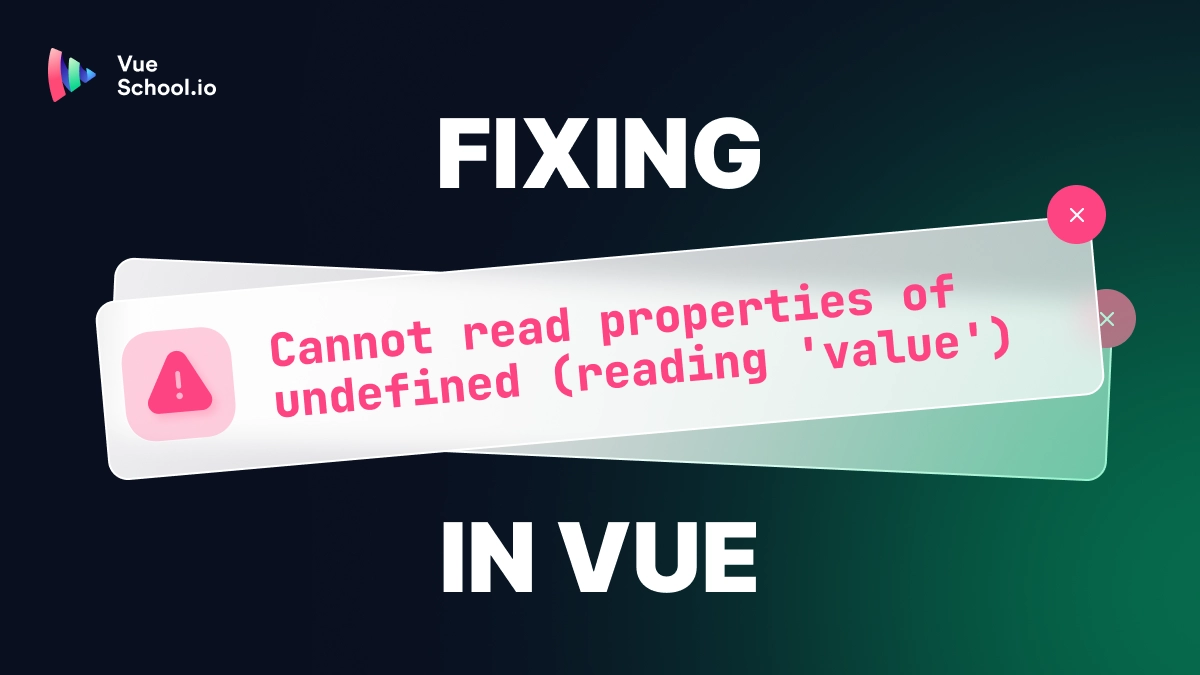What Makes a Good (Vue) Component Library? A Checklist

Are you considering building a component library in Vue.js or really any other framework? Perhaps you need it for a re-usable design system at work to reduce time to market and provide visual consistency. Or maybe you’d like to contribute another component library to the community at large.
You may be tempted to dive in and start coding right away but first you must step back and ask the question: “What makes a good component library?”
Let’s answer that question in this article, giving you a checklist of items we think are essential to think about.
Beautiful Components
First and foremost, aesthetics matter. A component library should not only function well but also look appealing. Consider your visual needs closely before choosing to adopt a custom build. Anyone of a variety of existing frameworks might suffice. If you are skilled with Tailwind CSS consider building the library around this popular CSS utility framework.
Functional Components
The blend of functionality and interaction is where Vue shines, bringing JavaScript's power to the forefront. Ensuring that components operate as intended is non-negotiable. They must deliver on their promises, providing the necessary functionality that developers expect.
Intuitive Design
Ease of use is paramount. Designing components that are intuitive yet flexible demands attention to detail—from consistent and intuitive naming conventions to a thoughtful design approach that prioritizes developer experience.
Cross-browser and Device Compatibility
Ensuring your component library performs flawlessly across various browsers and devices is essential. This includes not only responsive design that flows well based on screen size but also that chosen JavaScript API’s are compatible with targeted browsers.
Accessibility (A11y)
Accessibility isn't just a buzzword; it's a necessity. Your library should cater to a diverse range of users, including those with disabilities. Incorporating accessibility features, such as ARIA attributes, into your components not only broadens your user base but also aligns with best practices for inclusive design.
Type Safety and Self-Documentation
In the modern development landscape, type safety is crucial. Using TypeScript to develop your Vue component libraries provides self documenting features that give end developers help directly within their IDEs. The helps comes in the form of helpful hovering tooltips, targeted and focused autocompletion, and error detection tuned to your component APIs. It’s a huge boost to developer efficiency and satisfaction and reduces the time they must spend hopping back and forth between their code and the library docs.
Server-Side Rendering (SSR)
The flexibility to support both client-side and server-side rendering, especially for libraries like Nuxt, is essential for a comprehensive Vue UI library. This versatility ensures your library can meet various development needs. Along that same line, a Nuxt module that makes installation lightning fast is also a really nice feature add.
Test Coverage for Confidence
A well-tested library instills confidence. It empowers library maintainers with confidence to regularly add new features, update dependencies, and fix bugs without fear of regressions. It instills library users with confidence that updates won’t bring their apps crashing down (or worse broken in some subtle, hard to detect yet business essential way). Well written tests and good coverage makes for a vibrant and growing library that can keep up with the ever evolving landscape. Consider using Test Driven Develop (or TDD) to make tests a non-brainer part of your workflow.
Theming System
Supporting theming allows for customization and personalization, which are key for adapting a library to fit the branding and styling requirements of different projects (within reason). Libraries like Vuetify and Prime Vue offer inspiration for implementing effective theming systems.
Comprehensive Documentation
The importance of good documentation cannot be overstated. It's often the make-or-break factor for a library's adoption and success. Too many maintainers think of docs as an after thought. Don’t make the same mistake. It deserves equal attention.
Scalability and Maintainability
A good component library should not only meet current needs but also be prepared for future expansion. A clean, well-organized codebase facilitates maintenance and the introduction of new features, ensuring the library remains relevant and useful. This goes hand in hand with a well tested library, but also means thinking about factors such as versioning, predictable release cycles, and more.
Conclusion
While the aspects covered are fundamental, a truly standout library often includes additional features such as Figma UI kits, full app and/or site templates, helper composables, useful directives, and i18n support, among others.
Building a component library is undoubtedly a significant undertaking, but it's also a rewarding challenge. It's not necessary to address every possible need from the outset. Starting small and iteratively improving based on real-world feedback can be more effective than striving for perfection initially. If existing libraries do not meet your requirements, creating a custom one might be for you. Just make sure you consider the items on this checklist to build something truly amazing!
If you’d like help getting started building your UI library with Vue.js, we have a course just for you! It’s called: Crafting a Custom Component Library with Vue and Daisy UI. In it we delve into a lot of the items mentioned above. While we do use Daisy UI as a foundation for aesthetics, the course is about so much more than that. During the course we aim to address many of the general concerns of creating and publishing a Vue component library.
Start learning Vue.js for free

Comments
Latest Vue School Articles
Fixing “Cannot read properties of undefined (reading ‘value’)” in Vue

Decoding ChatGPT: How It Works and Why It Matters for Developers

Our goal is to be the number one source of Vue.js knowledge for all skill levels. We offer the knowledge of our industry leaders through awesome video courses for a ridiculously low price.
More than 200.000 users have already joined us. You are welcome too!
© All rights reserved. Made with ❤️ by BitterBrains, Inc.



